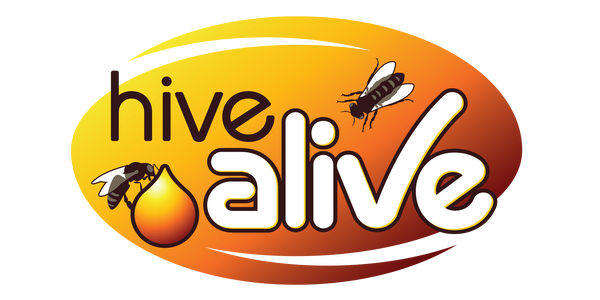The Ultimate Winter Insurance for Your Bees: HiveAlive Pollen & Fondant Patties
Sep 12, 2025
Insurance - a grudge purchase - but, as Linda said in our recent 'Over-winter success starts in the Fall' webinar "You sure will be happy your bees have it when winter sets in".
Winter can be the toughest season for honeybee colonies. Cold snaps, dwindling stores, and early spring build-up demands put stress on the hive. That’s where HiveAlive Fondant Patties and HiveAlive High Performance Pollen Patties come in. Together, they form a reliable “winter insurance kit” to keep colonies nourished, resilient, and ready to thrive when spring arrives.
We’ve structured this blog as a Q&A guide to make it easy to understand why, when, and how to use them.
Why do bees need extra feed in winter?
In winter, bees cluster to conserve heat. If honey stores are just a frame or two away, but the temperature is too cold for bees to break cluster, colonies can starve even with food nearby. By late winter and early spring, colonies may also run out of food just as brood rearing increases. Supplemental feeding ensures energy and protein are always within reach.
👉 Fondant = safe carbohydrate feed placed directly over the cluster.
👉 Pollen patties = protein boost to kickstart brood rearing ahead of spring.
What is HiveAlive Fondant Patty and why use it in winter?

The HiveAlive Fondant Patty is a solid carbohydrate feed enriched with HiveAlive liquid, vitamins, and amino acids.
Why it’s essential:
- Bees don’t need to break cluster to access it.
- Safe feed when it’s too cold for liquid syrup.
- Prevents starvation when colonies run out of stores or can’t reach them.
- Added HiveAlive supports gut health and winter survival.
Best use: December through March as the primary winter feed source. Place directly above the cluster and replace as consumed.
What about HiveAlive High Performance Pollen Patties?

While fondant provides carbohydrates (energy), bees also need protein to raise brood. The HiveAlive High Performance Pollen Patty is enriched with real USA irradiated pollen (4% or 15%) and HiveAlive liquid.
Why it matters in winter/spring:
- Protein fuels brood food production.
- Supports the creation of strong, long-lived winter bees in fall and early spring.
- Reduces risk of cannibalization during pollen shortages.
- Irradiated pollen ensures pathogen-free, safe nutrition.
Best use: Late winter (February–March) or early spring before natural pollen appears.
How do I use these products together as “winter insurance”?

Fall Feeding (Late August–October)
As the season winds down, your focus should be on building strong, long-lived winter bees. This is the most important feeding window of the year.
· Step 1: Syrup feeding- Before sustained cold sets in, feed sugar syrup activated with HiveAlive Concentrate. This builds up stores and supports gut health for the coming months.
· Step 2: Pollen support - Place HiveAlive High Performance Pollen Patties in early fall before natural pollen disappears. This ensures colonies raise high-quality winter bees capable of surviving through until spring.
· Step 3: Fondant insurance - As temperatures dip and liquid feeding is no longer safe (below ~53°F), switch to HiveAlive Fondant Patties. These patties sit directly over the cluster, giving bees instant access to digestible carbohydrates without breaking cluster.
Winter Feeding (December–February)
Winter feeding is all about survival. Colonies use up their stores steadily, and sudden cold snaps or extended freezes can leave bees stranded without access to honey. That’s where fondant shines:
· Primary winter feed: Use HiveAlive Fondant Patties placed directly above the cluster to ensure food is always accessible.
· Check with care: Only open hives and inspect patties when weather permits - ideally on milder days when breaking cluster won’t harm the bees.
· Replace as consumed: Keep patties available throughout the coldest months, but avoid over-inspecting, as disturbing the cluster can cause stress.
Early Spring Feeding (February–March)
As temperatures rise and colonies begin to expand, they need both energy and protein to fuel brood rearing.
· Fondant for energy: Continue feeding HiveAlive Fondant Patties during late winter and early spring cold snaps. This ensures colonies don’t starve before nectar flows begin.
· Pollen patties for protein: Add HiveAlive Pollen Patties 2–4 weeks before natural pollen becomes available. This provides the protein bees need for brood food production and stimulates strong early colony buildup.
· Transition back to liquid feeding: Once daytime temps consistently exceed ~53°F, resume feeding syrup activated with HiveAlive Concentrate for an added spring boost.
What does the science say?
HiveAlive products are backed by published, peer-reviewed research:
- +89% increase in colony population with autumn + spring HiveAlive feeding (our trial data).
- Beekeepers reported 77% overwinter survival, compared with ~44–45% national averages (2025 USA survey).
- Seaweed extracts (OceaShield®), a key HiveAlive ingredient, have antimicrobial and prebiotic properties, supporting bee gut health and immunity.
For further reading:
- Project Apis m Bee Health Reports
- Scientific publications on bee nutrition and overwintering
Final Thoughts
If you want your colonies to survive winter strong and explode into spring, HiveAlive Fondant Patties and HiveAlive High Performance Pollen Patties are your best insurance policy. Fondant provides the carbs to prevent starvation, while pollen patties supply the protein for brood rearing. Together, they give you peace of mind and healthier bees.
🐝 HiveAlive is a feed supplement, not a medicine. Always follow label directions.
